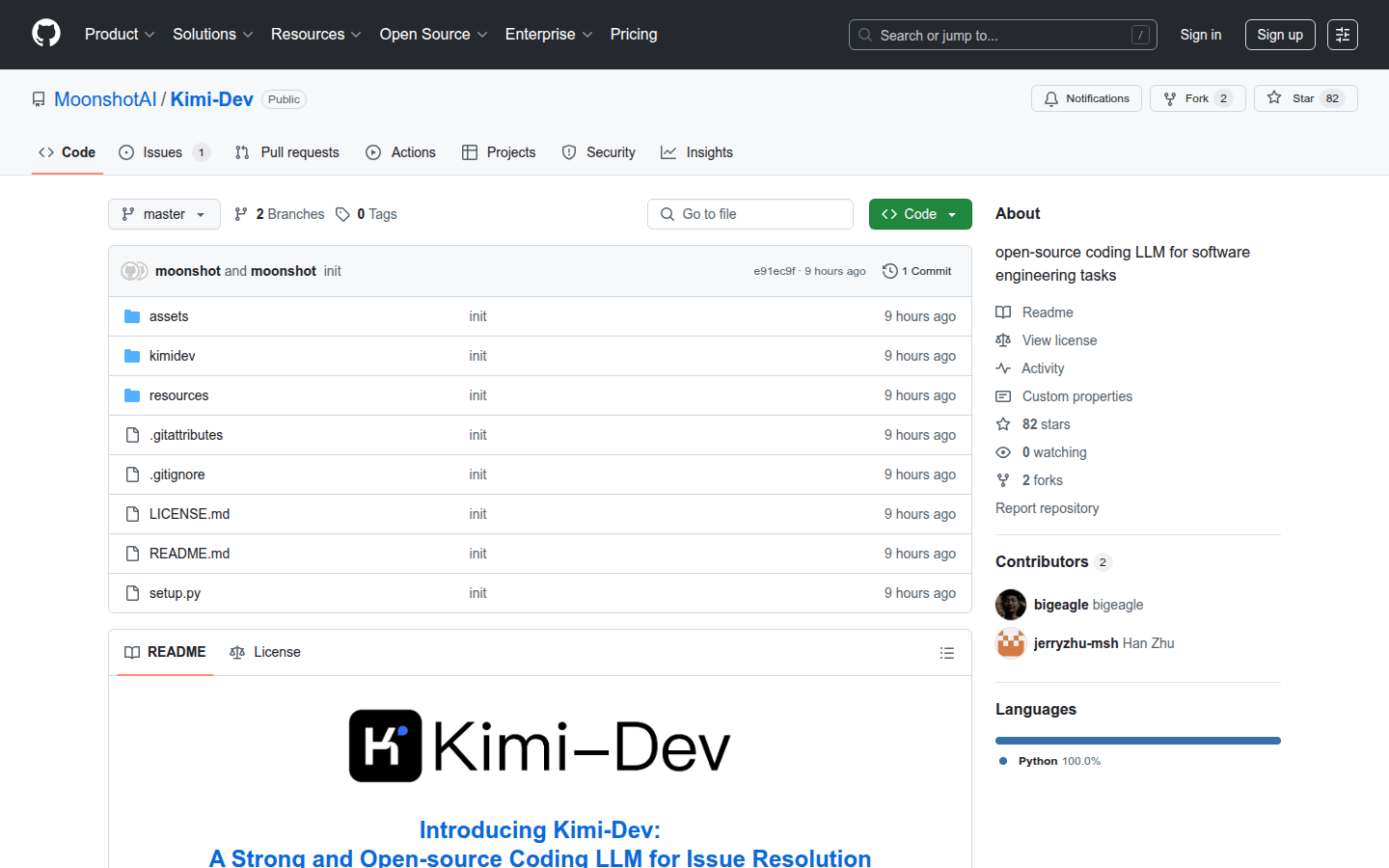

Kimi Dev
Overview :
Kimi-Dev is a powerful open-source coding LLM designed to tackle issues in software engineering. It is optimized through large-scale reinforcement learning to ensure correctness and robustness in real development environments. Kimi-Dev-72B achieved 60.4% performance on the SWE-bench benchmark, surpassing other open-source models, making it one of the most advanced coding LLMs available today. The model can be downloaded and deployed from Hugging Face and GitHub, making it suitable for use by developers and researchers.
Target Users :
This product is suitable for software engineers, developers, and researchers, helping them efficiently solve coding problems and improve development efficiency. Due to its open-source nature, users can freely modify and extend features according to their needs.
Use Cases
Use Kimi-Dev to fix bugs in open-source projects and automatically generate test cases.
Leverage Kimi-Dev during the software development process to improve code quality and reliability.
As a teaching tool, help computer science students understand methods for solving coding problems.
Features
Automatic code repair: Can intelligently locate and fix errors in code based on problem descriptions.
Unit test generation: Automatically generates relevant unit tests for code, enhancing code quality.
High performance optimization: Ensures model repair results conform to real-world development standards through reinforcement learning.
Easy deployment: Supports easy installation and usage on both local and cloud environments.
Strong community support: Open source, encouraging developers and researchers to contribute and improve.
How to Use
Clone the Kimi-Dev repository: Download the project using the git clone command.
Create and activate the environment: Use conda to create a virtual environment and activate it.
Install dependencies: Run the pip install command to install necessary dependencies.
Prepare the project structure: Download and extract the processed data.
Deploy the vLLM model: Deploy the model using the vllm serve command.
Run repair scripts: Run the bugfixer or testwriter script as needed for code fixes or test writing.
Featured AI Tools
Chinese Picks

Douyin Jicuo
Jicuo Workspace is an all-in-one intelligent creative production and management platform. It integrates various creative tools like video, text, and live streaming creation. Through the power of AI, it can significantly increase creative efficiency. Key features and advantages include:
1. **Video Creation:** Built-in AI video creation tools support intelligent scripting, digital human characters, and one-click video generation, allowing for the rapid creation of high-quality video content.
2. **Text Creation:** Provides intelligent text and product image generation tools, enabling the quick production of WeChat articles, product details, and other text-based content.
3. **Live Streaming Creation:** Supports AI-powered live streaming backgrounds and scripts, making it easy to create live streaming content for platforms like Douyin and Kuaishou. Jicuo is positioned as a creative assistant for newcomers and creative professionals, providing comprehensive creative production services at a reasonable price.
AI design tools
105.1M
English Picks

Pika
Pika is a video production platform where users can upload their creative ideas, and Pika will automatically generate corresponding videos. Its main features include: support for various creative idea inputs (text, sketches, audio), professional video effects, and a simple and user-friendly interface. The platform operates on a free trial model, targeting creatives and video enthusiasts.
Video Production
17.6M
















